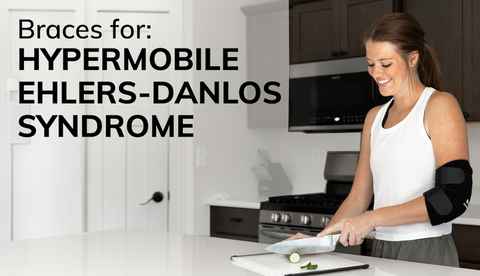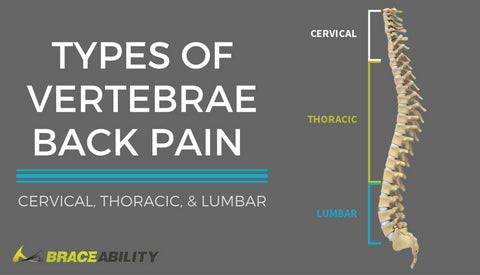5 Knee-Friendly Exercises for Chondromalacia Patella & 3 to Avoid
Are you struggling with knee pain that’s keeping you from your favorite activities? You might be dealing with chondromalacia patella, commonly known as "runner's knee." This condition doesn't mean you have to quit sports or exercise altogether. With the right approach, you can manage the pain and continue enjoying your activities. In this guide, we'll explore the causes, symptoms, and the best exercises to help you get back on track.
Understanding the Causes of Chondromalacia-Related Pain

Chondromalacia occurs when the protective cartilage covering the kneecap softens or wears down, often due to overuse or repetitive stress. Although there may be other causes of knee stress, these are the most common. This cartilage change can make it tough for the kneecap to glide smoothly within its groove.
The resulting friction can cause inflammation and pain at the front of the knee and/or behind the kneecap. In some cases, the swelling and pain of chondromalacia patella may be so bad that it limits leg extension (your ability to straighten your knee).
Quick Tips for Easing Chondromalacia Pain
Avoid Aggravating Activities
Minimize activities that exacerbate knee pain, such as climbing stairs, squatting, or kneeling. These movements can irritate the knee joint and worsen symptoms. By avoiding these triggers, you give your knee a better chance to heal.

Follow the RICE Method
The RICE method—Rest, Ice, Compress, and Elevate—is a time-tested approach for managing knee pain and inflammation:
- Rest: Allow your knee to rest and avoid strenuous activities.
- Ice: Apply ice packs to the affected area to reduce swelling and numb the pain.
- Compress: Use an elastic bandage to apply gentle pressure and help control swelling.
- Elevate: Keep your knee elevated above heart level to decrease swelling.
Wear a Chondromalacia Knee Brace
A knee brace designed specifically for chondromalacia can help stabilize the knee and support proper kneecap movement. This can alleviate pain and prevent further irritation.
Strengthen and Stretch Leg and Hip Muscles
The muscles around your leg and hip play a crucial role in proper kneecap alignment. Weak or tight muscles can lead to improper movement and increased pain. Incorporating exercises that strengthen and stretch these muscles can provide long-term relief and support optimal knee function.
While these steps are effective for managing symptoms, it’s important to remember they don’t address the underlying cause of chondromalacia patella. Combining these tips with a comprehensive exercise routine and seeking professional guidance can lead to better long-term outcomes and enhanced knee health.
5 Chondromalacia Patella Exercises That Provide Instant Relief
Chondromalacia treatment exercises focus on strengthening the muscles of the legs and hips without increasing the amount of pressure between the kneecap and the groove of the thigh bone. Following are a few great exercises for patellar chondromalacia, as well as exercise diagrams for additional clarification.
- Straight Leg Lift
- Lie down with one leg bent at a 90-degree angle with the foot flat on the floor and the other leg fully extended.
- Tighten the quadriceps (thigh muscle) of the straight leg and raise it to a 45-degree angle.
- Hold the leg in this elevated position for a second or two before slowly lowering it back to the ground.
- Repeat for 20 repetitions then switch legs. You should do two or three sets per day.
- External Hip Rotation (AKA, the Clam)
- Lie on your side with your legs stacked and knees bent at a 90-degree angle.
- Keep your feet together and slowly lift the top knee as high as you can without moving your pelvis.
- Hold for a second at the top, then slowly lower the knee back down.
- Repeat for 15 repetitions on each side, completing two or three sets.
- Wall Slide
- Stand with your heels about 6 inches away from a wall and your feet about a foot apart. Your back and butt should be pressed against the wall.
- Slowly slide your hips down the wall until your knees are bent at roughly a 45-degree angle.
- Hold that position for about five seconds, and then slowly slide back up to the starting position.
- Repeat this motion 10 to 15 times for two to three sets.
- Quadricep Contraction
- Lie down with both legs extended in front of you. Slide a rolled-up towel or blanket under one knee so that it is slightly bent.
- Lift the foot off the ground so that the knee straightens fully.
- Hold the knee locked in extension for five seconds, then relax the quadriceps and slowly lower the leg back to its resting position.
- Repeat for 10 repetitions and then switch legs. This should be done three to five times a day.
- Dumbbell Deadlift
- Pick up your dumbbells and hold them in front of you, standing with your feet shoulder-width apart.
- Slowly lower the dumbbells by hinging forward at the hip. Keep your chest and head up, back straight, and the weights close to your body. Your knees should be bent slightly—they should not bend as much as during a squat.
- When you have lowered the weights as far as you can without rounding your back, reverse the motion and slowly extend your knees, hips, and waist until you are standing upright with your shoulders pulled back. Engage your abdominal muscles throughout the lift.
- Repeat three to six times for three to five sets if using heavy dumbbells. You can do higher repetitions if using lighter weights.

Best Cardio Exercises for Chondromalacia Patella
Managing chondromalacia patella, a condition that affects the cartilage under the kneecap, requires careful selection of cardiovascular exercises that minimize stress on the knee joints. Here are some top cardio workouts that are gentle on the knees while keeping you fit:
Swimming
Swimming is a superb choice for cardio because the buoyancy of water supports your body and reduces joint stress. It provides a full-body workout, strengthening muscles around the knee without impact.
Stationary Biking
A stationary bike offers a smooth, low-impact exercise option. Ensure the seat is set high and use low resistance to avoid putting extra strain on your knees. This exercise helps maintain cardiovascular health while keeping knee stress to a minimum.
Gentle Walking
Walking at a moderate pace on flat surfaces is a simple yet effective cardio exercise. Choose well-cushioned shoes and stick to smooth paths to reduce the impact on your knees.
Elliptical Trainer
An elliptical trainer delivers a low-impact workout that mimics walking or running but with less stress on the knees. Its smooth, gliding motion helps maintain cardiovascular fitness without aggravating knee pain.
Kayaking and Rowing
Both kayaking and rowing are excellent for cardio workouts with minimal knee impact. These exercises focus on upper body strength while giving your heart a good workout, allowing your knees to rest.
Water Aerobics
Water aerobics combine the benefits of strength training and cardio while being gentle on the knees. The resistance of water provides a challenging workout that is low-impact on joints.
Remember to listen to your body and avoid pushing through knee pain. Modifying exercises and incorporating rest can help in managing chondromalacia patella while maintaining fitness.
3 Chondromalacia Knee Exercises to Avoid and Why

While chondromalacia exercises can be great for fixing your kneecap pain, there are also some that should be avoided because they can do more harm than good. These generally include exercises that put a lot of stress on the knee. Some examples include:
-
Lunges
Lunges involve a significant amount of knee flexion, which can put undue pressure on the patella (kneecap). The forward motion and the angle at which the knee bends during a lunge can aggravate the cartilage under the kneecap, leading to increased pain and potential damage.
-
Deep Squats
Deep squats require the knee to bend beyond 90 degrees, which can increase the compressive forces on the kneecap. This can cause irritation to the already compromised cartilage, leading to more pain and discomfort.
-
Leg Extension Machine
Using the leg extension machine places a high load on the front of the knee and increases the shearing forces on the patellofemoral joint. This can aggravate chondromalacia and worsen knee pain.
Sports to Avoid with Chondromalacia
Generally speaking, you should avoid sports involving a lot of running, jumping, or contact when recovering from a chondromalacia knee injury since they place high amounts of stress on the knee joints. Some specific, risky sports to avoid are volleyball, soccer, football, or basketball.
Key Takeaways for Chondromalacia Relief
Managing chondromalacia patella requires a combination of avoiding high-stress activities and incorporating targeted exercises to strengthen and balance the muscles around the knee. By following the recommended exercises and taking proper precautions, you can alleviate pain and improve your knee function without giving up on your favorite activities.
Remember to start slowly, warm up properly, and consult with a healthcare professional if you experience persistent pain or other concerns. With a consistent and mindful approach, you can achieve long-term relief and maintain an active lifestyle.




